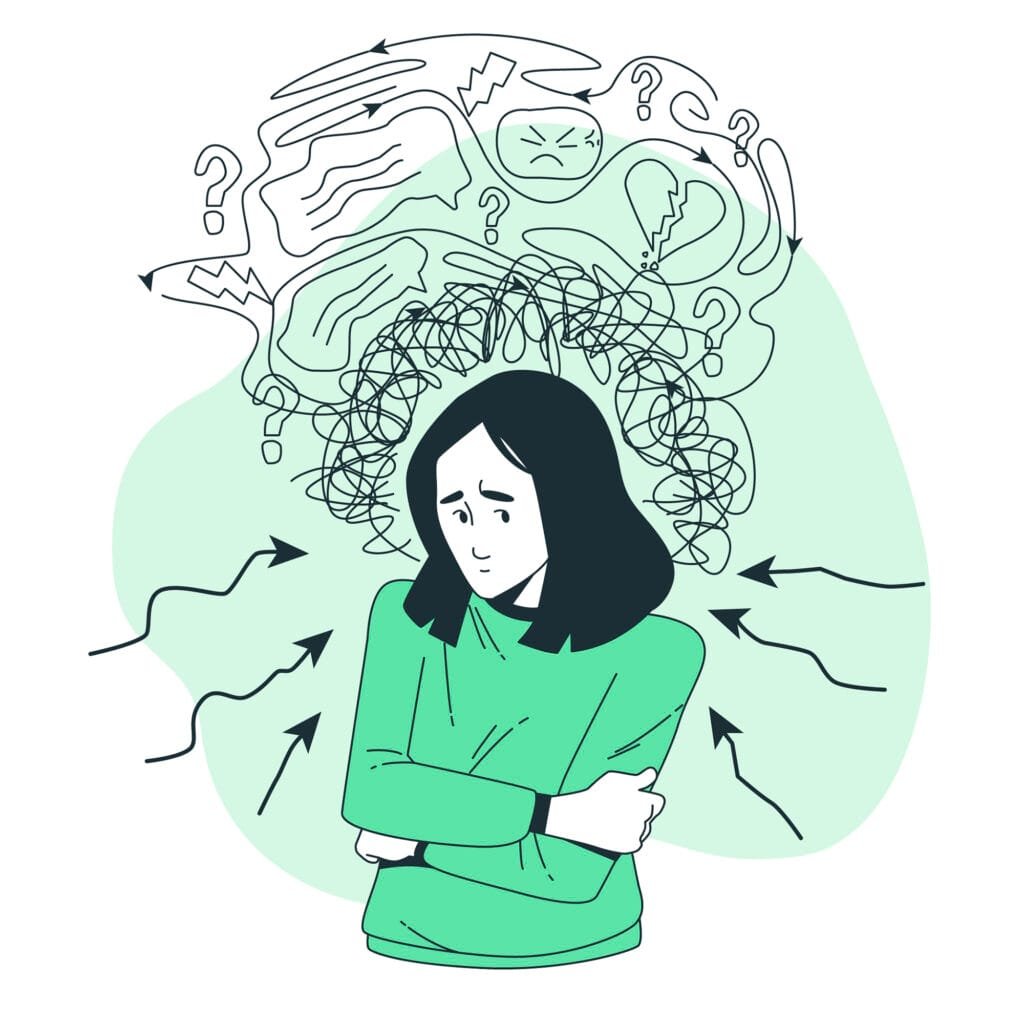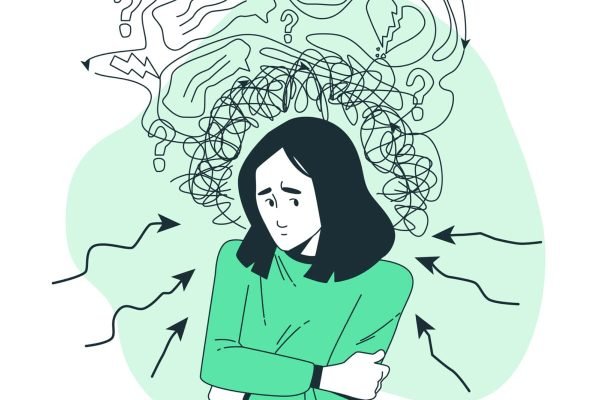Trauma is a part of human life that affects people from all cultures, ages, and backgrounds. It can deeply impact a person’s mind, emotions, and body. This blog will help you understand what trauma is, its types, how to recognize it, its symptoms, and ways to heal.
What is trauma?
At its core, trauma is a psychological and emotional response to a distressing event. It overwhelms an individual’s capacity to cope effectively. It disrupts the delicate balance of one’s sense of safety, security, and control over their life. This can emerge from a single traumatic incident or prolonged exposure to adverse circumstances, leading to a spectrum of consequences.
The experience of trauma is not limited to physical events. It can also be emotional or psychological. Trauma can stem from abuse, neglect, accidents, natural disasters, or sudden loss.

Different types-
Trauma encompasses a wide range of experiences, each inflicting a unique impact on the affected individual:
- Acute Trauma: This type arises from a single distressing event, such as a car accident, physical assault, or witnessing a violent incident. Specifically, these events can have a profound impact on an individual’s mental and emotional well-being, leading to symptoms of post-traumatic stress disorder (PTSD) and other psychological challenges. It often leads to a sudden and intense shock to the individual’s psyche.
- Chronic Trauma:Also known as complex trauma, this form emerges from prolonged exposure to distressing situations, such as ongoing domestic abuse, childhood neglect, or experiences in war zones. Moreover, the cumulative effect of chronic trauma can be deeply corrosive to an individual’s well-being.
- Developmental Trauma: Experienced during childhood, this type of trauma arises from adverse experiences that disrupt healthy emotional development. These experiences can include emotional neglect, physical or sexual abuse, or growing up in an unstable and unpredictable environment.
- Vicarious Trauma: Individuals working in professions involving exposure to others’ traumatic experiences, such as healthcare workers, therapists, or journalists, can experience this. They absorb the emotional burdens of those they help, leading to significant emotional distress.
Identification
Identifying trauma in oneself or others can be challenging, as individuals often develop coping mechanisms to suppress or avoid distressing emotions. However, some common signs and behaviors may serve as red flags-
- Emotional Disturbances: Frequent mood swings, unexplained anxiety, or sudden outbursts of anger may indicate unresolved trauma simmering beneath the surface.
- Avoidance: Individuals may actively avoid situations, places, or people that remind them of the traumatic event. This avoidance serves as a protective measure, helping them shield themselves from the pain associated with the past.
- Intrusive Memories: This can manifest as intrusive thoughts, flashbacks, or nightmares, causing the individual to re-experience the distressing event, often without warning.
- Hyperarousal: The survivors may experience hyperarousal, making them easily startled, sleep disturbances, and a constant state of vigilance, perpetually on guard for potential threats.
- Emotional Numbing: This can lead to emotional detachment, leaving individuals feeling emotionally numb or disconnected from their own feelings and the world around them.
Symptoms
The aftermath of trauma can manifest in a myriad of psychological, emotional, and physical symptoms, which can vary in intensity and duration:
- Psychological Symptoms: The survivors may experience depression, anxiety disorders, post-traumatic stress disorder (PTSD), dissociative disorders, and difficulties with concentration and memory.
- Emotional Symptoms: The emotional impact of trauma can lead to intense feelings of fear, guilt, shame, and anger, often overwhelming the individual’s ability to cope.
- Behavioral Symptoms: To cope, individuals may engage in self-destructive behaviors, such as substance abuse, self-harm, or reckless actions. Consequently, these harmful coping mechanisms can exacerbate the effects of trauma and hinder the healing process.
- Physical Symptoms: It can manifest in physical ailments like chronic pain, headaches, digestive issues, and weakened immune responses, reflecting the intimate connection between mind and body.
Overcoming trauma
Healing from trauma is a challenging and often nonlinear process, but it is possible with the right support and interventions. Nevertheless, it requires patience, understanding, and a willingness to address the underlying issues to facilitate the healing journey. Here are some effective strategies to overcome trauma:
- Seek Professional Help: Engaging with a qualified therapist or counselor experienced in trauma treatment can provide essential guidance and support. Therapy offers a safe space to process and explore traumatic experiences while developing healthy coping mechanisms.
- Psychotherapy: Various evidence-based therapeutic modalities are effective in treating trauma. These include Cognitive Behavioral Therapy (CBT), Eye Movement Desensitization and Reprocessing (EMDR), and Trauma-Focused Cognitive Behavioral Therapy (TF-CBT). Additionally, these therapies aid in processing traumatic memories, challenging negative beliefs, and fostering resilience.
- Supportive Relationships: Building a dedicated support network of understanding friends and family can provide a sense of safety and belonging, offering a buffer against the isolation often experienced by trauma survivors.
- Group Therapy: Participating in group therapy sessions with others who have experienced trauma can provide a sense of camaraderie and shared experiences. Additionally, it fosters a space where individuals can gain insight and support from others who understand their struggles.
- Self-Care: Engaging in self-care practices, such as regular exercise, meditation, creative activities, or spending time in nature, can promote emotional healing and overall well-being. Furthermore, these activities can also enhance one’s ability to cope with stress and improve mental health..
- Mindfulness and Grounding Techniques: Mindfulness practices and grounding exercises help individuals stay present and anchored during distressing moments. Additionally, these techniques can provide a sense of control and stability when feeling overwhelmed.
What can be done?
Trauma is an intricate tapestry that shapes the lives of countless individuals worldwide. Understanding the different types and recognizing its symptoms are crucial for providing appropriate support and interventions. These are essential steps in overcoming its invisible wounds. With empathy, patience, and the right resources, individuals can embark on a transformative journey of healing and resilience. They can reclaim their lives after enduring the torment of traumatic experiences. By fostering a culture of understanding and compassion, society can better support trauma survivors. This support is crucial as they progress on their path to recovery and renewal.

